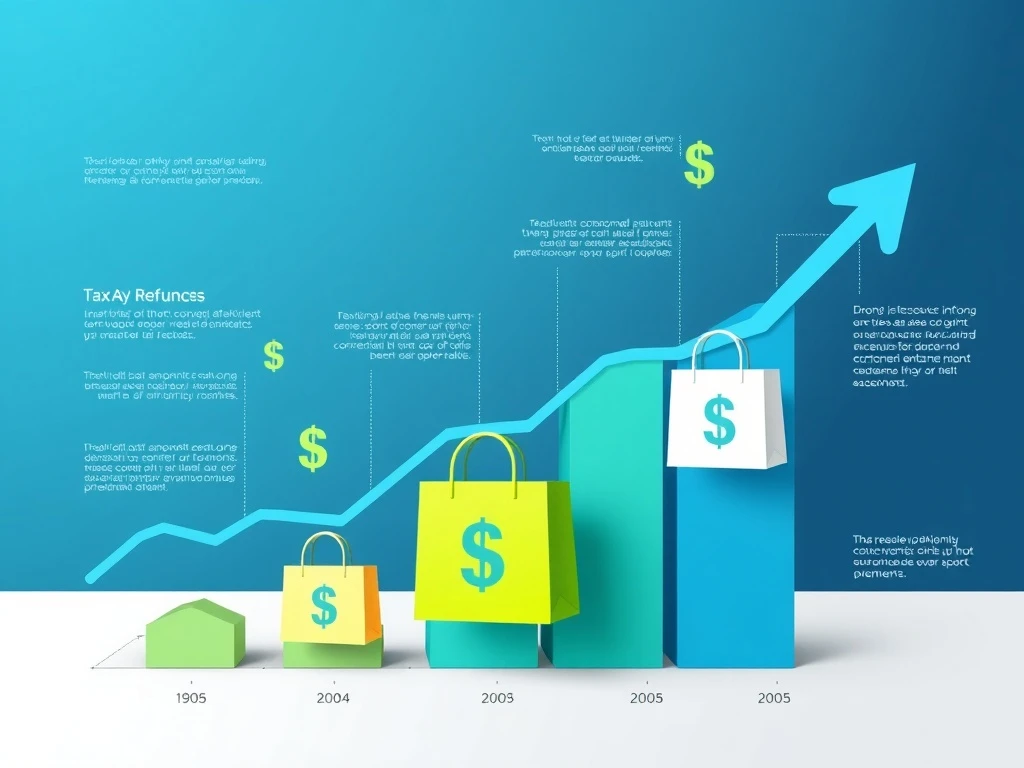American taxpayers are poised to receive an unprecedented windfall this season. JPMorgan analysts predict a massive tax refund surge that could fundamentally reshape consumer behavior and market dynamics. This development represents a critical inflection point for economic recovery.
Understanding the Tax Refund Surge Phenomenon
JPMorgan’s research indicates this tax refund surge stems from multiple factors. Pandemic-related stimulus measures created unusual withholding patterns. Additionally, tax code changes affected many households’ calculations. Consequently, refund amounts exceed historical averages significantly.
Economic Impact of Massive Refund Distribution
The tax refund surge will inject billions into the economy quickly. Consumers typically spend refunds within weeks of receipt. This immediate cash infusion stimulates retail sectors dramatically. Furthermore, it boosts consumer confidence measurably.
Market Implications and Sector Analysis
JPMorgan identifies specific sectors benefiting from this tax refund surge. Retail stocks typically outperform during refund season. Discretionary spending increases notably across categories. Meanwhile, financial services see elevated activity.
Consumer Behavior Shifts Post-Refund
The tax refund surge influences spending patterns distinctively. Consumers often allocate refunds to both necessities and luxuries. Debt repayment frequently accompanies major purchases. Savings rates also experience temporary increases.
Regional Distribution and Demographic Patterns
This tax refund surge affects regions differently. Middle-income households receive proportionally larger refunds. Certain states show higher average refund amounts. Demographic factors influence spending choices significantly.
Long-term Economic Consequences
The tax refund surge may have lasting economic effects. Temporary consumer boosts can become sustained growth. Market sectors may maintain elevated performance. Policy makers monitor these developments closely.
Investment Strategy Adjustments
JPMorgan recommends portfolio adjustments during this tax refund surge. Consumer cyclical stocks offer particular opportunity. Timing investments around refund distribution proves crucial. Monitoring retail earnings becomes essential.
FAQs
What causes this year’s large tax refund surge?
Pandemic stimulus measures and tax code changes created unusual withholding situations, resulting in larger-than-average refund amounts for millions of taxpayers.
How will the tax refund surge affect retail sales?
Retail sales typically increase 15-20% during major refund periods, with electronics, home goods, and automotive sectors seeing the largest boosts.
Which demographic groups benefit most from the tax refund surge?
Middle-income families with children receive the largest proportional benefits due to child tax credit provisions and standard deduction changes.
How long do the economic effects of tax refund surges typically last?
Primary spending effects occur within 6-8 weeks of refund distribution, though some sectors may experience sustained demand for 3-4 months.
Should investors adjust portfolios for tax refund season?
Yes, consumer discretionary and retail stocks historically outperform during refund periods, making tactical allocations worthwhile.
How does this tax refund surge compare to previous years?
Current projections indicate refund amounts 20-25% higher than pre-pandemic averages, making this among the largest redistributions in recent history.








